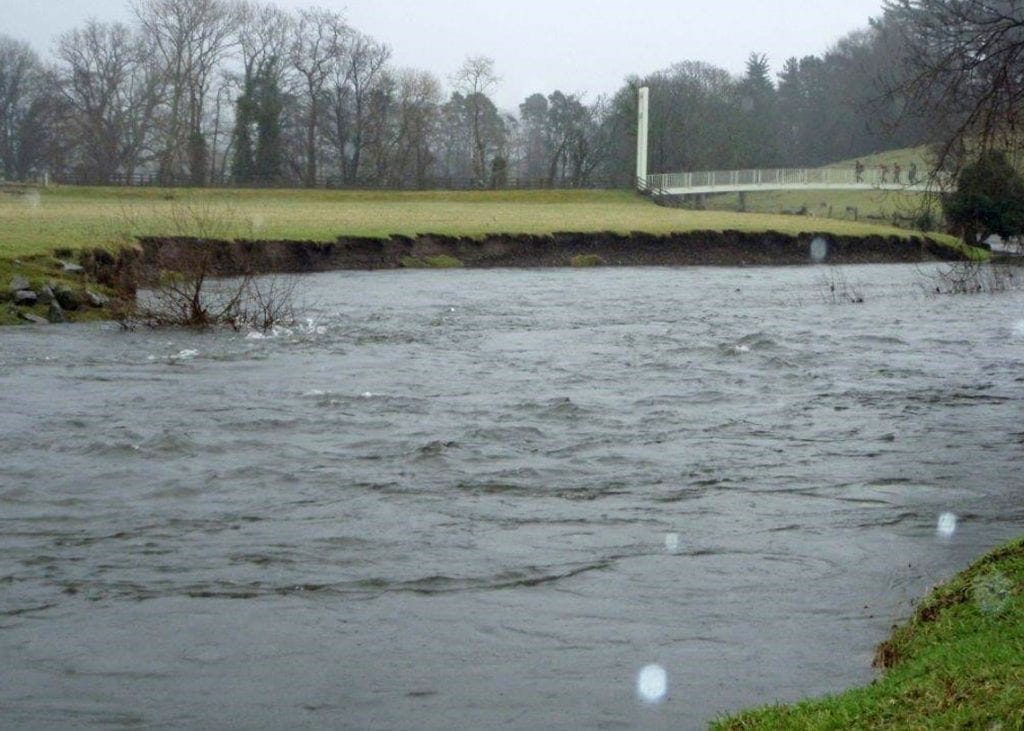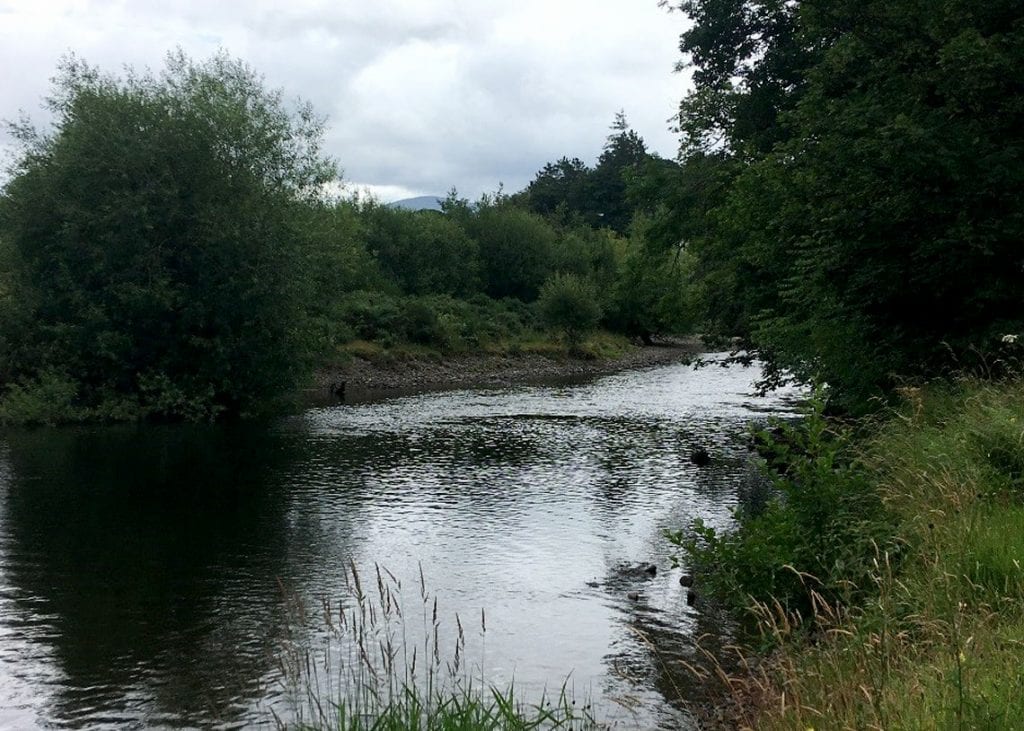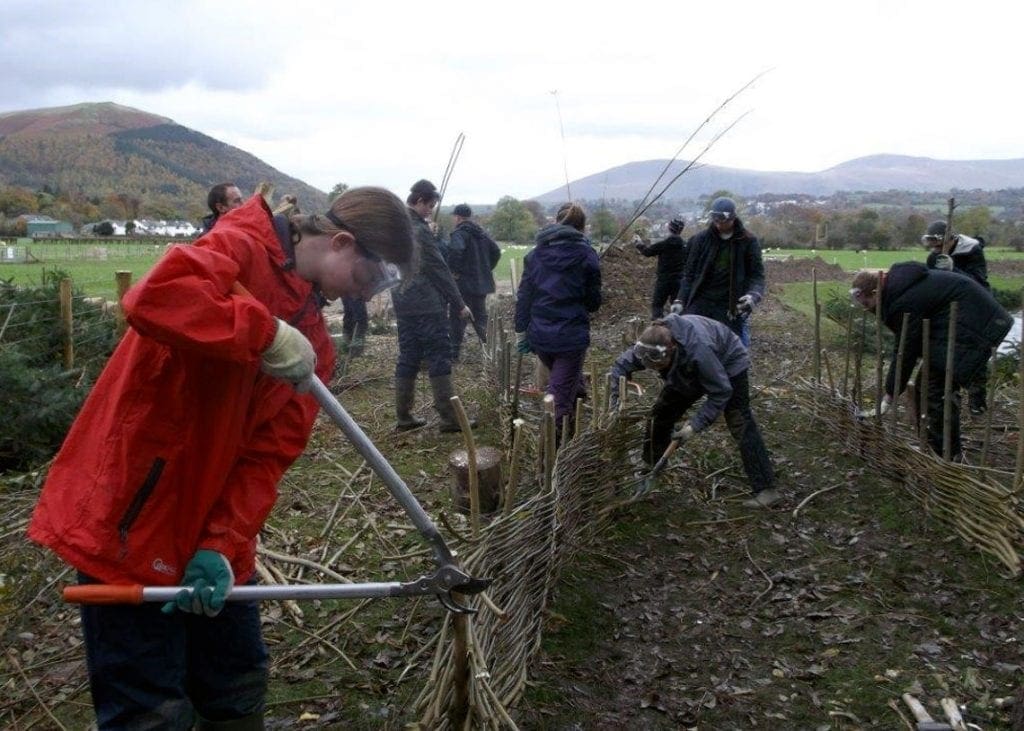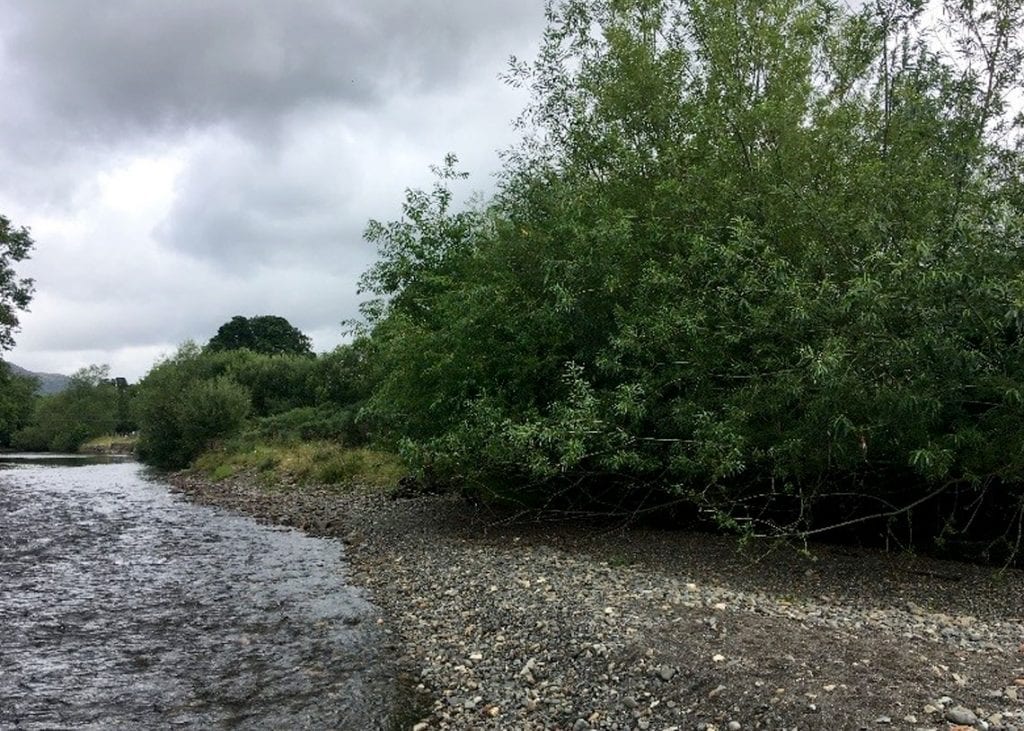The Environment Agency (EA) is celebrating ten years of successful soft engineering along Cumbria rivers including near Keswick that has improved habitats and water quality, protected fish and got more people fishing.
The programme of work, funded through fishing licence sales, has been led by the EA’s Mike Farrell, who lives in Keswick and is a keen angler himself. The series of work has included many different soft engineering techniques at different locations such as on the River Derwent at Portinscale near Keswick including river restoration, tree planting and habitat creation.
Mike said: “This has been a great programme to work on over the last 10 years, it’s good to see that all our hard work has paid off. Having successfully completed 130 projects, working with 219 different partner organisations, the programme has led to significant environmental improvements across Cumbria. I would like to take this opportunity to thank everyone involved in this project over the years, from our partners to local school children, local angling groups to the passing public and schools further afield.”
Students from Keswick School are among pupils from 15 schools from across Cumbria, Nottingham and Sunderland to have worked with the EA on these projects. Students from Sunderland attend with the Derwent Hill outdoor education centre based at Portinscale.
Over the last ten years, the Environment Agency, as part of the works, has coordinated the planting of 31,995 trees across the county to provide river bank stabilisation, create shaded areas to help boost fish populations and slow the flow of the rivers. This was completed with the help of hundreds of school pupils, local angling clubs, associations and environmentalists adding up to thousands of volunteer hours.
The programme has introduced of more than 2,072 metres of willow to protect banks from erosion as well as 44,141 metres of fencing along water courses. This helps to create riparian strips (area where land meets water) and wildlife corridors. It also allows natural rejuvenation of the river banks, contributes to natural flood management due to re-profiling of the river banks and also decreases the amount of sediment that goes into the river.
Along with this the introduction of 58 sections of woody material debris and management of gravel beds provide shelter for young fish and creates channel diversity, enhancing fish to naturally breed leading to a higher number of fish in our rivers.
Mike added: “The project has been rewarding for all involved and it is clear that by working together great things can be achieved. It really is amazing what can be done when we all come together. Looking back and seeing work we implemented 10 years ago thriving and working to its best potential is certainly rewarding and makes all the hard work from everyone involved totally worth it!’’













